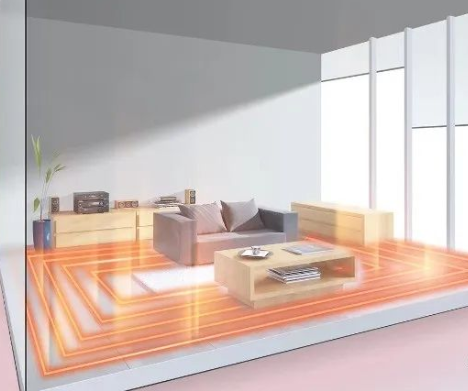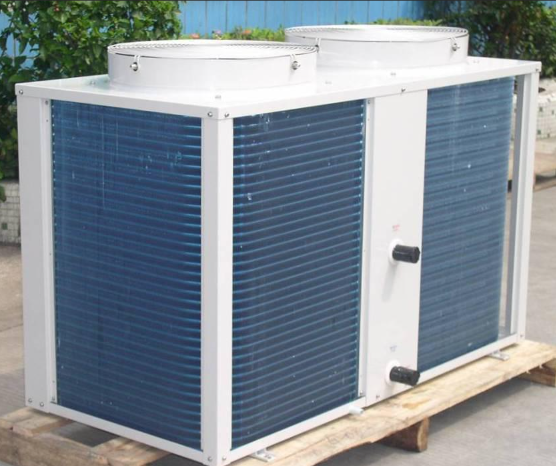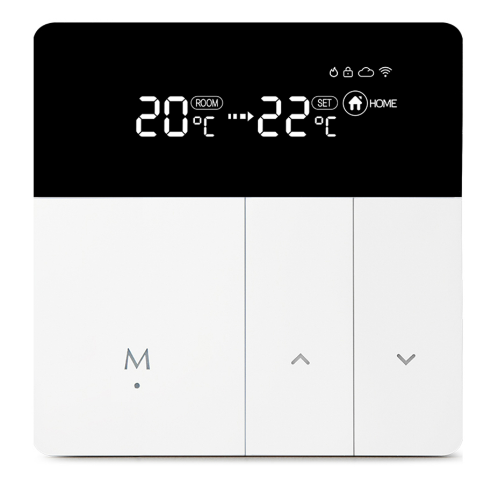Underfloor heating systems for comfortable living!
2022-10-31.
A good heating system is indispensable if you want to live comfortably in the cold winter months.
Underfloor heating - which uses the entire floor as a radiator and supplies heat to the room by means of radiant and convective heat transfer through the ground for comfortable heating - is a symbol of modern quality of life.

Classification of underfloor heating
According to the different heat mediums, there are water floor heating and electric floor heating.
Water underfloor heating
The heating method uses hot water at a temperature of not more than 60°C as the heat medium, circulates in the heating pipes, heats the floor and supplies heat to the room through the ground in a radiant (primary) and convective (secondary) heat transfer mode.
The main components are: boiler/wall-hung stove/air source heat pump (heating), manifold, ground coil, thermostat (monitoring and regulating the temperature), and other accessories and ground accessories.
Electric Floor Heating
The heating cable with a maximum permissible working temperature of 65°C on the outer surface is buried under the floor or tiles, and the floor is heated by the heating cable as the heat source, and the room or floor temperature is controlled by a thermostat to realise the heating method of ground radiation heating. Its main components are: heating body, thermostat, ground auxiliary materials.
The heating body is mainly made up of metal wire heating cables and carbon fibre heating cables, as well as electric heating film, carbon crystals, graphene and many other products.
Water underfloor heating is suitable for larger households with long heating periods and elderly people and children; electric underfloor heating is suitable for smaller households with short heating periods and fewer rooms.
Components of underfloor heating
Underfloor heating systems consist mainly of heat source + control + heat transfer + insulation.
Heat source
The heat source can be a wall-hung stove or an air source heat pump, which provides the heat (hot water) required for the operation of the underfloor heating, equivalent to the heart of the human body.
In addition, the most used air source heat pump on the market, because it can simultaneously with central air conditioning and floor heating, with comfort, energy saving, safety, environmental protection and other characteristics, widely used in the "coal to electricity" project, but also widely favoured by home users.

The control includes the manifold, thermostat, electric heating actuator and other components, which are responsible for controlling the speed and temperature of the underfloor heating water flow, equivalent to the central nervous system of the human body, controlling various indicators and behaviours of the human body.

All the circulating water for underfloor heating is transferred through the mains to the manifold, which is then distributed through the manifold to the branch circuits in each room, and finally back to the water collector, cycling around and around to achieve the heating effect. The electric heating actuator is installed on the main water collector and is connected to the thermostat, which receives instructions from the thermostat to control the water flow in the underfloor heating pipe loop, thus controlling the room temperature.
Heat transfer consists of underfloor heating mains and underfloor heating coils, which are mainly heated by the circulation of hot water in the pipes, just like the blood vessels of the human body, responsible for carrying and transporting the blood from the heart.
The life span of underfloor heating is very much related to the choice of underfloor heating pipes. By material, underfloor heating coils can be divided into PE-RT pipes, PEX pipes, PB pipes, aluminium-plastic composite pipes and so on. Currently, PE-RT and PEX series floor heating pipes are more commonly used on the market and can be used at 70°C for as long as 50 years.
Insulation consists of insulation boards, reflective film, border insulation strips and other underfloor heating auxiliary materials, like human skin and fat, which play a role in insulation against cold.
The biggest function of the auxiliary materials for underfloor heating is insulation, with good insulation performance and correspondingly lower costs for later use, as well as playing a certain protective role for the underfloor heating pipes.
Each part of the underfloor heating system has a different role to play, and each part combines to create the successful operation of the underfloor heating system. Of course, the formal installation also determines the final heating effect.





